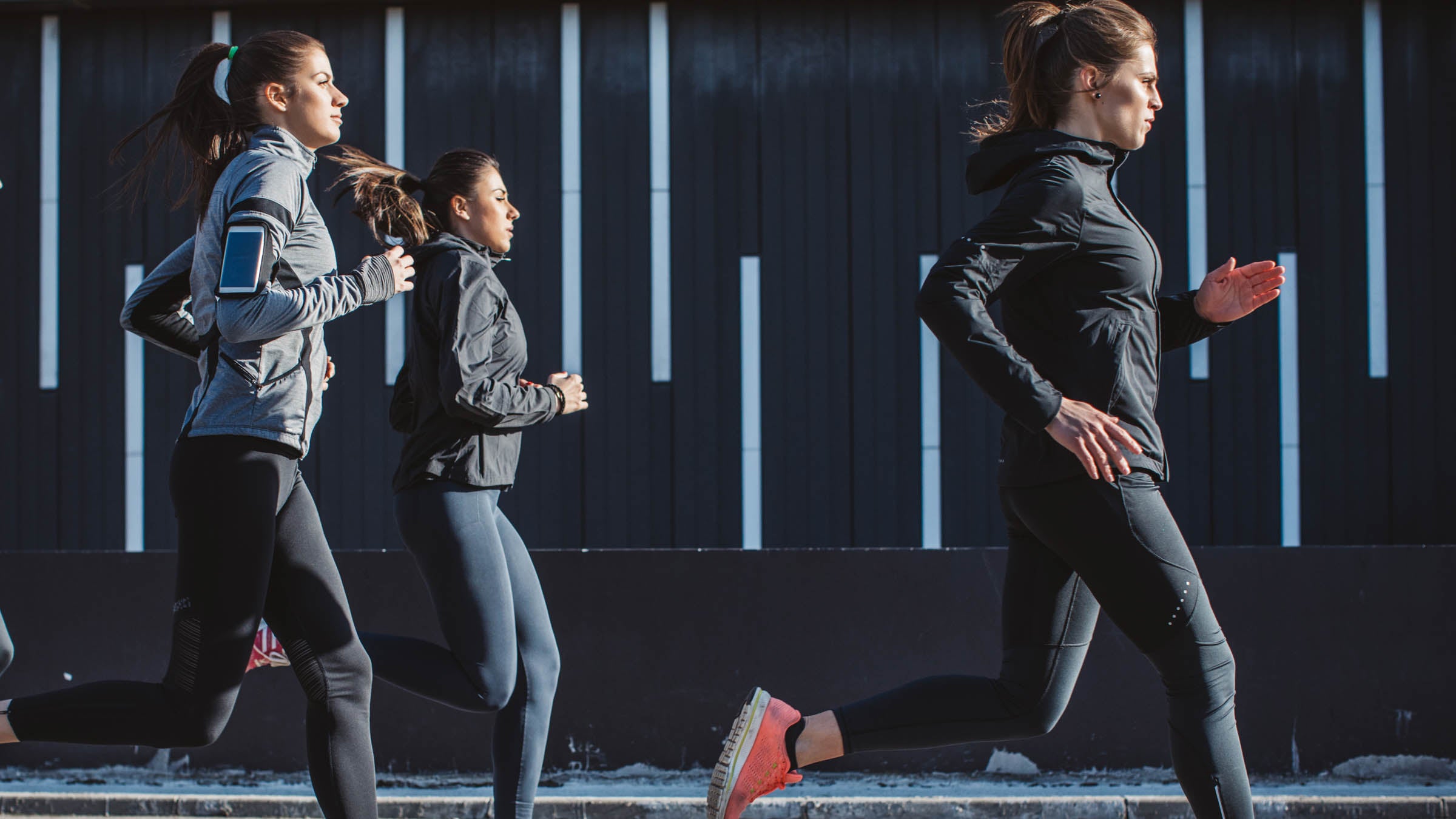Best Ways to Draft in a Race, Avoid Injury, and Choose a Running Shoe

The Best Way to Draft Behind Another Runner
Runners didn’t use to think much about drafting. It was considered important in cycling, given the much higher speeds and greater air resistance, but not in running. Then came Eliud Kipchoge’s two Sub-2 exhibition efforts, including his successful 1:59:40 in Vienna last October Both involved elaborate—and quite different — pace formations running ahead of him.
Now, in the Journal of Biomechanics, a group of French researchers have investigated what another marathon great, Kenenisa Bekele, did right — and not so right — in his drafting tactics while running 2:01:41 at the Berlin Marathon last September. Bekele had three pacers in the Berlin race, where he finished only two seconds slower than the world record Eliud Kipchoge set in 2018.
The Study: The study team used a system called “computational fluid mechanics” to model Bekele’s race. Basically, he ran behind three shoulder-to-shoulder pacers for the first 25K. This meant that he was: A) sometimes lined up behind the left-most pacer; B) sometimes lined up behind and between the left and middle pacer; and C) sometimes lined up behind the middle pacer.
Result: It made a difference. In the best aerodynamic position, behind the middle pacer, Bekele used 2.84 percent less energy than he would have used running solo. In the worst of the three positions, behind and between two pacers, he used 1.91 percent less.
Take-home message: If you want to draft behind another runner to save energy and improve your finish time, get directly behind the runner. That’s where you’ll gain the most aerodynamic advantage.
Note: This might prove more difficult than it sounds. When you’re directly behind someone, you limit your field of vision — an uncomfortable feeling. It’s much more natural to let yourself drift off a left shoulder or right shoulder. However, this isn’t your optimal energy-saving position.
Trail Runners Get Overload Injuries Too
Trail running is often thought to cause fewer injuries than road running. The surface might be more forgiving, you use a shorter stride, you go slower, and so on. Which raises an interesting question: Do trail runners get overuse injuries for the same reason as road runners, generally due to “training errors?”
A new paper in the International Journal of Environmental Research and Public Health is the first to look into the question. And a group of Spanish investigators find that the answer is, “Yes.”
The study: Researchers followed a group of male trail runners (average age, 36) for a full year. They used GPS monitoring to get an objective measure of how much each subject ran every week, and when they got injured.
Results: “Week to week changes in workload of more than 10–15% were related to increased injury risk,” the paper concludes. In other words, similar to road runners, trail runners tend to get injured when they make a substantial jump in training.
Digging deeper: Even more interesting, this training increase was preceded one- to two-weeks earlier by an approximately 20% decrease in training. In other words, the injured runners appeared to be those who were attempting to make up for lost workouts several weeks before. They suffered a training dip, then attempted to jump ahead to get back on schedule. Bad idea.
Take-home message: Don’t try to make up for lost time. It’s a major cause of runner injuries—even if you run on soft trails. Better to come back gradually and accept that you might run a little slower in your next race.
New Shoe Selection Tool Dials-in Comfort
Finding the right running shoe has never been easy, and hasn’t gotten any easier through the years. Yes, the internet offers various alternatives: Editorial guides, user-generated shoe reviews, and interactive tools that claim to identify your best shoe.
But the single most important challenge hasn’t changed: The shoe that’s right for someone else isn’t necessarily the right shoe for you. That’s why a team of Australian researchers recently developed a four-part RUN-CAT (Comfort Assessment Tool) to help you make the right choice. Their paper was published by the Journal of Sports Sciences.
Background: Shoe comfort, though it sounds like a vague, nontechnical evaluation, is increasingly thought to be the optimal way to select running shoes for both performance and injury-prevention. This is sometimes referred to as the Benno Nigg Paradigm, after the Canadian biomechanics expert who first proposed the “comfort filter.”
Study methods: The investigators first surveyed 282 runners to come up with a 19-item list of qualities the runners thought crucial to shoe selection. Next they used a separate group of 100 recreational runners (48 males, 52 females) to determine “reliability, discriminative ability, and the difference in comfort that was actually deemed important” by the runners. Finally, 30 new runners (half male, half female) ran in different types of shoes to decide which they found most comfortable.
Results: The Aussie researchers identified four key measures of running-shoe comfort and the individual contribution of each. The measures are forefoot cushioning (31.1%), shoe stability (27.7%), forefoot flexibility (24.7%), and heel cushioning (17.5%). They were surprised that forefoot cushioning more strongly related to overall shoe comfort than heel cushioning.
Take home message: The RUN-CAT is new, and could prove simple and helpful when you’re trying on shoes at a specialty retailer. As the researchers note, it should have “particular application to choosing the most comfortable shoe at the point of sale.”